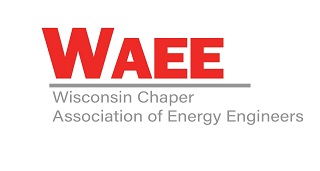
It’s been just over a year since the largest federal investment in domestic clean energy and climate change in U.S. history, the Inflation Reduction Act (IRA), was passed into law. Since then, technology developers, contractors and customers alike have been scrambling to understand all the new provisions and rules that inevitably came with it. We witnessed new technologies become eligible for tax credits for the first time, like standalone storage, and it opened the door for many new individuals and businesses to access affordable clean energy and transportation, particularly in underserved communities.
One area in particular that is eligible for enhanced credits through the IRA is low-income communities. Many tax credits have the ability to stack an additional percentage if your project meets certain requirements outlined by the Low-Income Communities Bonus. You may be wondering if your project is eligible and how to take advantage of this bonus. Here are answers to some common questions you may have.
What locations are eligible for this bonus?
There are four main categories that your project site can be eligible for:
- Category 1: Low-Income Community
- Category 2: Indian Land
- Category 3: Low-Income Residential Building Project
- Category 4: Low-Income Economic Benefit Project
How do I know if my location falls into a low-income community?
The Department of Energy (DOE) has published maps detailing where low-income communities are located across the U.S. using census data. These maps are searchable by address and can help potential applicants determine their eligibility.
There are additional resources available for determining eligibility for other categories as well, including the participation in certain Covered Housing Programs for Category 3 and Household Income Limits for Category 4.
Is there a limit to how many projects can receive a bonus?
The DOE will allocate the bonus credit to a total of 1.8 gigawatts of eligible solar and wind capacity each year. These 1.8 GW are divided between each category as well, with 700 MW allocated to Categories 1 and 4, and 200 MW allocated to Categories 2 and 3. For the 2023 allocation, a minimum of 50% of the capacity of each category will be reserved for meeting certain ownership or geographic criteria.
How much is this bonus worth?
A 10-percentage point increase will be available for solar and wind projects located in low-income communities or on Indian Land, and a 20-percentage point increase for facilities that are part of a low-income residential building or projects that supply an output to a low-income household. These percentage bonuses will stack with a base tax credit, so in the case of the 30% Investment Tax Credit, your qualifying project could claim up to 50% with the bonus.
Which tax credits are stackable?
The only credit that is stackable with the Low-Income bonus is the Investment Tax Credit (ITC). If you plan to claim the ITC for your solar or wind facility, you may be able to claim the bonus if you qualify for one of the four categories.
What do I need to do to take advantage of the bonus?
The DOE will be selecting recipients via an application process. Applications will be opening early fall 2023, and can be accessed through the Application Portal on the Low-Income Communities Bonus Credit Program website. There you can find the date when the application period begins and closes, as well as additional resources for applicants. Required information includes the applicable category, ownership, location, facility size and documentation to support eligibility. Each applicant must create a Login.gov account to submit their application. More information on this process will be provided in early September. Completed projects are not eligible to apply.
How is the DOE selecting applicants?
All applications submitted within the first 30 days will be considered to have been submitted the same date, and everything after will be accepted on a rolling basis. Depending on the volume of responses, the DOE plans to accept applications for 2023 through early 2024. All submissions will be evaluated based on the capacity limit, where the DOE will then provide a recommendation to the IRS as to whether a particular applicant should receive an allocation. All applicants will receive either an award or denial letter for their facility.
Is my project eligible?
Are you interested in applying for this bonus credit, but not sure if your project qualifies? EnTech Solutions has an in-house grants and incentives team with the expertise and knowledge to evaluate your project and provide a recommendation, not only for this program, but for the many other federal, state and local incentive programs that may be available for your project. Contact us today to learn more.
You may also be interested in:
Thank you for checking out the EnTech Solutions blog. To stay up to date with technologies, developments and trends about clean energy, please subscribe.








